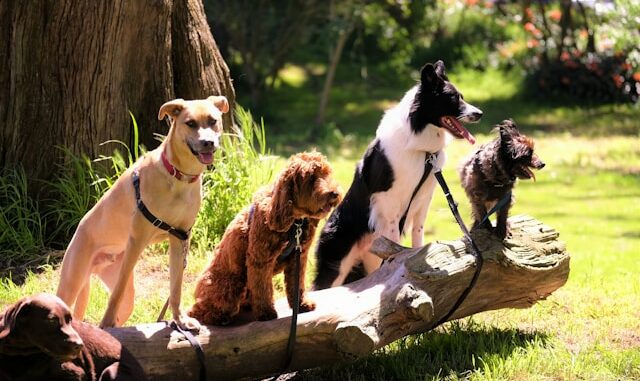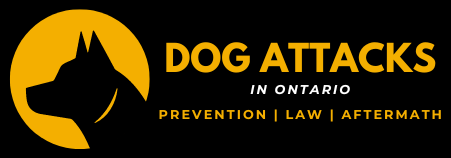
The park bustles with activity: frisbees flying, children shrieking with laughter, and dogs of all shapes and sizes weaving between happy feet. I’m Sarah, a professional dog walker, and my furry crew for the day – a playful Beagle named Bailey and a stoic German Shepherd named Max – are enjoying their morning walk. But what happens if seemingly harmless fun takes a nasty turn? As a dog walker, understanding liability in dog attack situations is crucial.
Beyond the Wagging Tail: The DOLA and Shared Responsibility
Ontario’s Dog Owners’ Liability Act (DOLA) enforces strict liability on dog owners for attacks. This means the owner is financially responsible for any injuries or damages caused by their dog’s bite or attack, regardless of the dog’s breed, prior behavior, or even the owner’s knowledge. But here’s the twist: the DOLA defines the “owner” as the person with “care and control” of the dog at the moment of the attack. This broadens the scope beyond the name on the collar, placing the legal responsibility on my shoulders during walks.
Shared Burden: When Dog Walking Turns into Legal Liability
As a dog walker, the burden of responsibility becomes mine while I have physical control of the leash. This means I can be held liable if:
- An Attack Occurs: If Bailey gets startled by a loud noise and jumps on a startled jogger, causing them to fall and break an arm, I, as the walker with control, could be held liable under the DOLA.
- I Lose Control: If Max, despite my best efforts, manages to slip out of his harness and knock down a child while chasing a squirrel, I could be facing legal repercussions.
Beyond the Lone Walker: Co-Workers and Shared Liability
Dog walking companies often have multiple walkers handling a pack of dogs. In such situations, liability can be shared:
- Joint Control: If I’m walking Bailey and another walker is handling Max, and Max attacks due to a lack of control on the other walker’s part, we could be jointly liable.
- Company Policies: Some dog walking companies have internal policies outlining responsibility during group walks. Understanding these policies is crucial to protecting yourself from unforeseen situations.
Temporary Guardian: Understanding My Role as a Dog Sitter
Dog walking isn’t my only responsibility. Sometimes, I also pet-sit at clients’ homes. Even in these scenarios, the DOLA applies:
- In-Home Care: If I’m entrusted with Bailey’s care at his owner’s home and he attacks the mail carrier, I become the temporary owner under the DOLA and could be held liable.
- Understanding the Agreement: Before pet-sitting, clarify the scope of my responsibility. A written agreement outlining expectations and potential liability can be helpful for both me and the pet owner.
Protecting Myself and My Furry Clients: Risk Management Strategies
While dog attacks are rare, understanding liability encourages proactive risk management:
- Client Screening: Before taking on a new client, I assess the dog’s temperament and ensure they are up-to-date on vaccinations.
- Leash Selection and Maintenance: Using appropriate leashes for each dog and ensuring they are in good condition minimizes the risk of a dog slipping free.
- Meeting the Pack: Before venturing out on walks, I familiarize myself with each dog’s personality and identify potential triggers for aggressive behavior.
- Continuous Training: Staying updated on dog training best practices allows me to handle challenging situations more effectively.
Communication is Key: Building Trust with Dog Owners
Open communication with dog owners fosters trust and helps manage risk:
- Discussing Past Behavior: I inquire about any past aggressive tendencies the dog might have and tailor my approach accordingly.
- Emergency Protocols: Establishing a clear plan for unexpected situations, such as a dog getting loose, ensures everyone knows how to react.
- Regular Updates: Providing regular updates to the dog owners about the walk and the dog’s behavior keeps everyone informed and allows for early intervention if any concerns arise.
The Unexpected Bite: Navigating a Dog Attack
Despite best efforts, an attack might still occur. Here’s how to handle it:
- Prioritize Safety: Ensure your own safety and the safety of others by separating the dogs and de-escalating the situation.
- Seek Medical Attention: If someone is injured, immediately call for medical help.
- Inform the Owner: Contact the dog owner as soon as possible and provide details of the incident.
- Document Everything: Take pictures of
